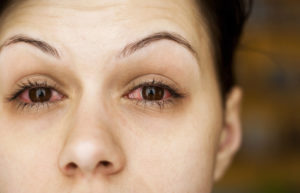
Most individuals with allergic conjunctivitis have associated allergic rhinitis (i.e., hay fever)where they have other symptoms which may include sneezing, runny nose, nasal congestion, post-nasal drip, itchy nose, itchy throat, sinus headaches, sinus pressure, and/or snoring. Asthmatic individuals may experience increased asthma symptoms in the Spring if they are sensitive to outdoor allergens such as tree pollen, grass pollen, and/or molds. It is not unusual for some individuals to experience increased asthma, allergic rhinitis, and allergic conjunctivitis symptoms together.
The diagnosis of allergic conjunctivitis begins with a comprehensive history and physical examination by a board certified allergist. Allergy skin testing or blood testing is usually performed in order to identify if and what the offending allergens are that are causing the allergic eye symptoms.
When evaluating an individual with the symptoms of eye allergies, it is important for the physician to rule out other causes of red eyes or “pink eye.” Viral, bacterial, and/or parasitic infections of the eye(s) can cause similar symptoms but are treated differently. Chemical irritation or a foreign body can also cause the eyes to become red. Anterior uveitis, which can be associated with an autoimmune disorder or a sexually transmitted disease, may also cause redness of the eyes. In addition, there is usually “photophobia” which is the pain in the eyes when in a bright environment. A subconjunctival hemorrhage or bleed may also occur when the capillaries break near the “whites” of the eyes. Some causes of subconjunctival hemorrhages may include trauma, coughing, straining, sneezing elevated blood pressure, diabetes, and/or certain blood thinning medications . They can also just occur spontaneously without an apparent cause.
The treatment of allergic conjunctivitis may include the use of various eye drops, oral antihistamines, nasal corticosteroids, leukotriene antagonists, and/or allergy shots (i.e., allergy injections, allergy immunotherapy, allergy desensitization, allergy hyposensitization). Of course, avoiding the offending allergen is the first and primary focus with any allergy, but in most cases, especially if allergic to the pollen in the Spring, it is almost impossible to avoid. That being said, there are still some avoidance measures that can be practiced in order to limit one’s exposure to pollen. Some of them are as follows:
The board-certified allergy doctors at Black & Kletz Allergy are specialists in diagnosing and treating both adults and children with allergic conjunctivitis as well as many other allergic disorders. Some of these include allergic rhinitis, asthma, sinus disease, eczema (i.e., atopic dermatitis), hives (i.e. urticaria), generalized itching (i.e., pruritus), contact dermatitis (e.g., poison ivy, poison oak, poison sumac), swelling episodes (i.e., angioedema), anaphylaxis, insect sting allergies, food allergies, medication allergies, eosinophilic disorders (e.g., eosinophilic esophagitis), and immunological disorders. Black & Kletz Allergy has 3 convenient locations in the Washington, DC, Northern Virginia, and Maryland metropolitan area. We have offices in Washington, DC, McLean, VA (Tysons Corner), and Manassas, VA. All of our locations offer on-site parking and our Washington, DC and McLean, VA offices are Metro accessible. There is a free shuttle that runs between our McLean, VA office and the Spring Hill metro station on the silver line.
If you suffer from allergies or any of the conditions listed in the above paragraph, please call us in order to schedule an appointment with one of our board-certified allergists. You may also click Request an Appointment and we will respond within 24 hours by the next business day. The allergists at Black & Kletz have been helping the residents and visitors of the Washington, DC metropolitan area for more than 50 years and are pleased to help you improve the quality of your life by alleviating those unwanted and annoying allergies and asthma symptoms.


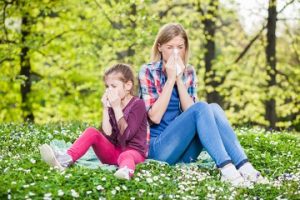 March is the month that many trees begin pollinating in the Washington, DC metropolitan area. As temperatures begin to climb, we will start seeing a light yellowish coating on our automobiles. For many allergy sufferers, this represents the onset of misery for many individuals who are sensitized to tree pollen.
March is the month that many trees begin pollinating in the Washington, DC metropolitan area. As temperatures begin to climb, we will start seeing a light yellowish coating on our automobiles. For many allergy sufferers, this represents the onset of misery for many individuals who are sensitized to tree pollen. Excessive dryness of the skin is a feature of many chronic dermatological disorders and contributes greatly to itchy skin. Regular application of a moisturizer is critically important in the prevention and treatment of
Excessive dryness of the skin is a feature of many chronic dermatological disorders and contributes greatly to itchy skin. Regular application of a moisturizer is critically important in the prevention and treatment of  Woman injecting emergency medicine into her leg
Woman injecting emergency medicine into her leg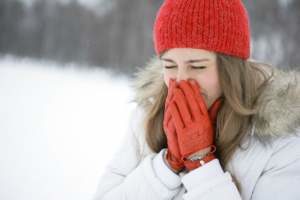 This is a very relevant subject now as we have had very cold temperatures so far over this last month in the
This is a very relevant subject now as we have had very cold temperatures so far over this last month in the  Exercise-induced anaphylaxis (EIA) is defined as the onset of allergic symptoms during, or immediately after, exercise. The manifestations may include
Exercise-induced anaphylaxis (EIA) is defined as the onset of allergic symptoms during, or immediately after, exercise. The manifestations may include 
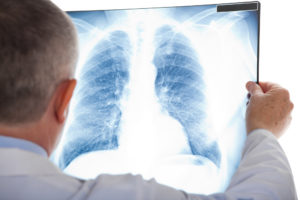
 It is that time of the year again when families and friends gather together for the highly anticipated Thanksgiving Day holiday. Most people do not think about how Thanksgiving may affect one’s allergies, however, the holiday is full of potential triggers for many individuals prone to various allergies.
It is that time of the year again when families and friends gather together for the highly anticipated Thanksgiving Day holiday. Most people do not think about how Thanksgiving may affect one’s allergies, however, the holiday is full of potential triggers for many individuals prone to various allergies. Adverse reactions to medications are very common. Among the drugs associated with immediate hypersensitivity reactions (i.e., Type I allergy, IgE antibody-mediated allergy), penicillins are the most commonly observed.
Adverse reactions to medications are very common. Among the drugs associated with immediate hypersensitivity reactions (i.e., Type I allergy, IgE antibody-mediated allergy), penicillins are the most commonly observed.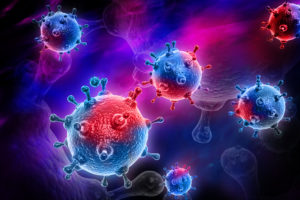 “Flu” season is almost here and it is time to get prepared for its onslaught.
“Flu” season is almost here and it is time to get prepared for its onslaught. Halloween is just around the corner and most individuals do not think of allergies when thinking of Halloween. They more aptly think of costumes, trick-or-treating, candy, bobbing for apples, skeletons and skulls, and Halloween parties. It is a festive time of the year and both adults and children enjoy the holiday. Even though adults enjoy the event, it is the children that really become excited!
Halloween is just around the corner and most individuals do not think of allergies when thinking of Halloween. They more aptly think of costumes, trick-or-treating, candy, bobbing for apples, skeletons and skulls, and Halloween parties. It is a festive time of the year and both adults and children enjoy the holiday. Even though adults enjoy the event, it is the children that really become excited!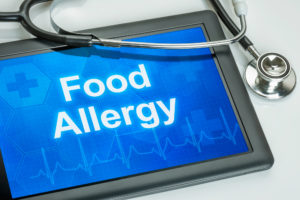 The most common type of food allergy is an “immediate hypersensitivity” reaction (i.e., Type I reaction), where the symptoms usually begin within a few minutes of exposure to the offending food. These reactions are mediated by an antibody called IgE which interacts with the protein (i.e., antigen, allergen) in the food. This interaction causes a release of chemicals which are responsible for the undesirable allergic symptoms. The most common foods that cause these types of reactions are nuts and shellfish, though any food can theoretically trigger IgE.
The most common type of food allergy is an “immediate hypersensitivity” reaction (i.e., Type I reaction), where the symptoms usually begin within a few minutes of exposure to the offending food. These reactions are mediated by an antibody called IgE which interacts with the protein (i.e., antigen, allergen) in the food. This interaction causes a release of chemicals which are responsible for the undesirable allergic symptoms. The most common foods that cause these types of reactions are nuts and shellfish, though any food can theoretically trigger IgE. Recurrent infections occur in many individuals in the U.S., as well as around the world. In the U.S., malnutrition is not a common cause as it is in many undeveloped third-world countries. Parasitic infections are also not very common in the U.S. unless an individual travels to a developing country, consumes uncooked meat/fish, drinks tainted water, or has an immune deficiency. The most common types of infections found in the U.S. are numerous and include
Recurrent infections occur in many individuals in the U.S., as well as around the world. In the U.S., malnutrition is not a common cause as it is in many undeveloped third-world countries. Parasitic infections are also not very common in the U.S. unless an individual travels to a developing country, consumes uncooked meat/fish, drinks tainted water, or has an immune deficiency. The most common types of infections found in the U.S. are numerous and include 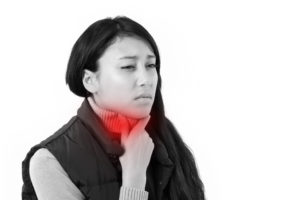 Definition:
Definition:









